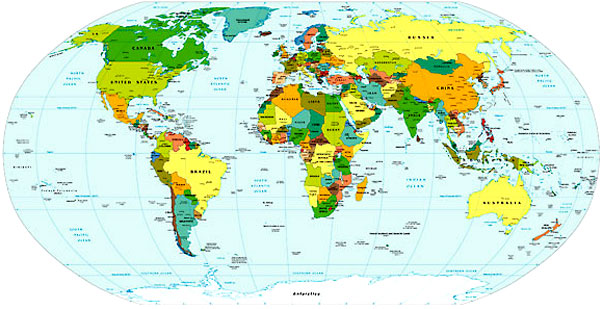 Ah, Norway. 17 May marks Norway’s Constitutition Day, and gives me a chance to think about fjords, and the Northern Lights. Officially, it’s the Kingdom of Norway, and as well as the country itself includes Svalbard and Jan Mayen—as I’ve written before, Svalbard is one of the places that I’m fascinated by. I often seem to find myself looking up its history, and pictures of the place… The sovereignty of Norway over Svalbard is based upon the Svalbard Treaty of 1920. Norway, you will no doubt be pleased to know, tied with first place in the human development index in 2007, and was also ranked as the most peaceful country in the world last year.
Ah, Norway. 17 May marks Norway’s Constitutition Day, and gives me a chance to think about fjords, and the Northern Lights. Officially, it’s the Kingdom of Norway, and as well as the country itself includes Svalbard and Jan Mayen—as I’ve written before, Svalbard is one of the places that I’m fascinated by. I often seem to find myself looking up its history, and pictures of the place… The sovereignty of Norway over Svalbard is based upon the Svalbard Treaty of 1920. Norway, you will no doubt be pleased to know, tied with first place in the human development index in 2007, and was also ranked as the most peaceful country in the world last year. From the archaeological evidence, it looks like Norway was first colonised about 12,000 years ago. It’s early known history was a time of petty kingdoms; tradition has it that Harald Fairhair (Harald Fairhair!) brought to these kingdoms together in 872 AD with the Battle of Hafrsfjord, thus becoming the first king of a now-united Norway.
Scandinavia of course also brings to mind Vikings, and I’m interested to learn that it was people of Norwegian origin who founded the Irish cities of Dublin and Limerick. Also that the third king of Norway, Haakon the Good (Haakon the Good!), was Norway’s first Christian king.
 Alliances and kingdoms among the Nordic nations weren’t continually independent after the early unification of Norway: in the fourteenth century Norway, Denmark and Sweden all came under control of the Danish Queen Margrethe I, and though Sweden broke away in the 16th century, Norway remained part of this union until 1814. (1814 also saw Norway on the losing side in the Napoleonic Wars.) Independence in Norway, as well as bringing a constitution based on American and French models, also brought about the election of the Danish crown prince Christian Fredrik as king. On top of that, war broke out with Sweden—they’d been promised Norway as a reward for aiding the winners in the Napoleonic war, but their army wasn’t strong enough to defeat the Norwegians outright. Norway instead agreed to enter a personal union with Sweden (which I have now learned means there is “relationship of two or more entities that are considered separate, sovereign states, which, through established law, share the same person as their respective head of state.” Again, thankyou Wikipedia.) This union ended in 1907.
Alliances and kingdoms among the Nordic nations weren’t continually independent after the early unification of Norway: in the fourteenth century Norway, Denmark and Sweden all came under control of the Danish Queen Margrethe I, and though Sweden broke away in the 16th century, Norway remained part of this union until 1814. (1814 also saw Norway on the losing side in the Napoleonic Wars.) Independence in Norway, as well as bringing a constitution based on American and French models, also brought about the election of the Danish crown prince Christian Fredrik as king. On top of that, war broke out with Sweden—they’d been promised Norway as a reward for aiding the winners in the Napoleonic war, but their army wasn’t strong enough to defeat the Norwegians outright. Norway instead agreed to enter a personal union with Sweden (which I have now learned means there is “relationship of two or more entities that are considered separate, sovereign states, which, through established law, share the same person as their respective head of state.” Again, thankyou Wikipedia.) This union ended in 1907.Norway remained neutral in World War I, but was invaded by the Germans in World War II.
There are two official written Norwegian languages (who, besides the Norwegians, knew?)—Bokmål and Nynorsk. Both officially have equal status and are both used in public administration, schools, media etc—but Bokmål is the language used by the majority. There are also a lot of dialects spoken, as well as some Sami languages, especially in the north. (Do yourself a favour. Look up the Sami people. Interesting stuff.)
Today’s poem—ah! getting to the point!—is by the Norwegian poet Pedro Carmona-Alvarez, and is translated by Roger Greenwald, who is probably the major translator of Norwegian literature into English. It’s another from the new book New European Poets, which I cannot praise enough.
60 Minutes
There’s a war, it starts and is already missing
from histories, tales
under the light of lamps that sparkle
and lean over bodies
There’s a war and there are pebbles. The presence
of myths, blood running from the forehead puddles
in the eyes
resembles make-up and puddles in the eyes resembles war
in the eyes that tremble from being windows,
shaking from knowing the inside
There’s a war and all the generals have drowned.
There’s a war
and my sweetheart comes home
her hair pulled up in a knot that tightens her face
till it’s unrecognizable.
There’s a war and the ones who know are heading home
to watch themselves on screens.
Make me happy and it won’t help much.
—Pedro Carmona-Alvarez
translated from the Norwegian by Roger Greenwald
from New European Poets


No comments:
Post a Comment